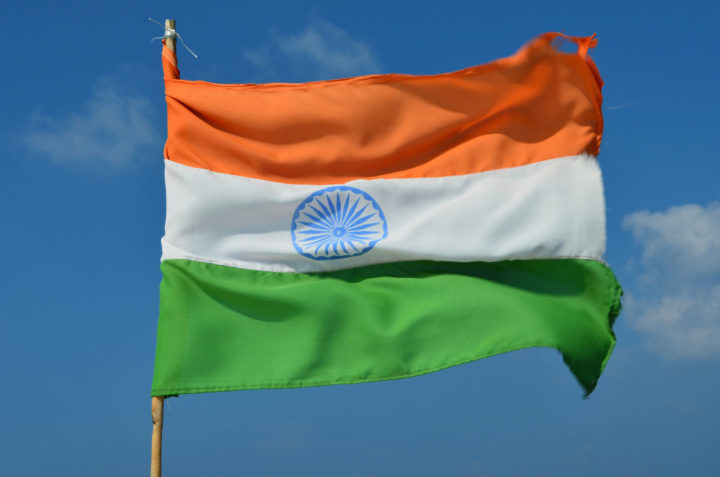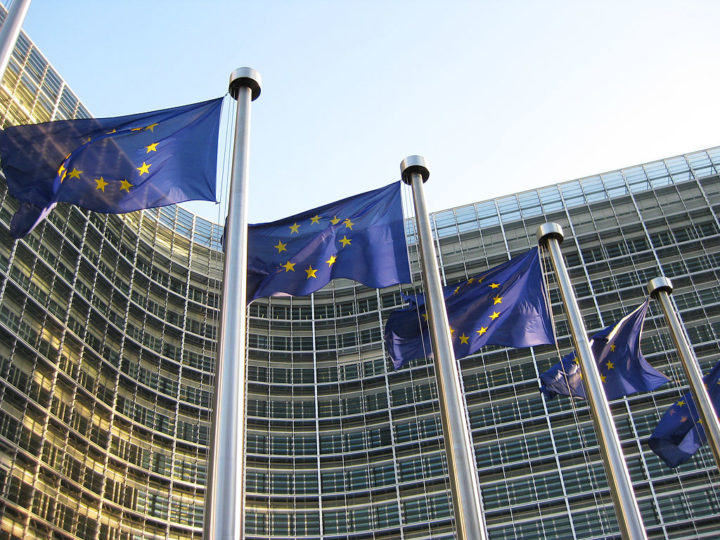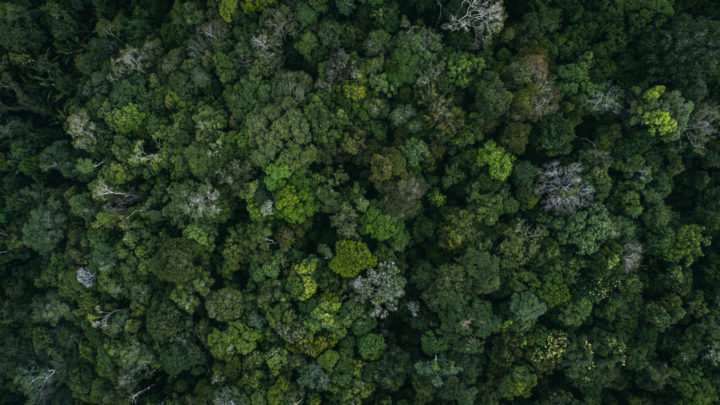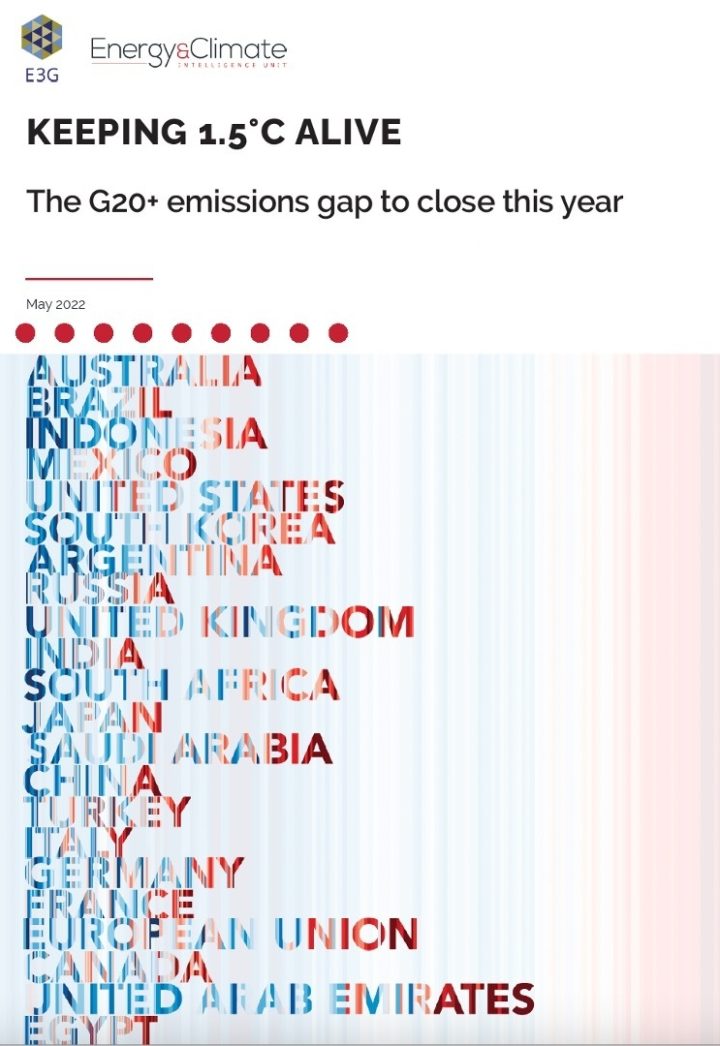G20 and climate progress
In June, we reported on G20 nations' and COP hosts' climate commitments; as international meetings pick up this autumn, we look at progress since.

By Gareth Redmond-King
@gredmond76Share
Last updated:
The G20 nations account for four fifths of global GDP and three quarters of world trade. With two-thirds of the planet’s population, these 19 nations plus the European Union, between them, are responsible for more than 75% of global greenhouse gas emissions.
In July, the World Resources Institute (WRI), E3G and ECIU pulled together an assessment of how G20 members are doing on cutting emissions, as we look ahead to the next UN climate summit this November. For good measure, we threw in the hosts of COP27 (Egypt) and COP28 (United Arab Emirates) as well.
Less than two months away from COP27, just after G20 climate and energy ministers concluded recent meetings in Indonesia, let’s look again at progress.
Faltering…
These were amongst the highest level G20 meetings to have taken place since Russia invaded Ukraine. With European and North American nations condemning Russian aggression, and Russia also at the table keen to resist those condemnations, the stage was not really set for constructive engagement.
The most prominent headline from those Ministerial meetings included a warning from current COP President, Alok Sharma that some nations were ‘backsliding’ on commitments. Immediately afterwards, the International Energy Agency (IEA) published advice for G20 President, Indonesia, that they need to pick up the pace on their policies to implement their emissions cuts pledges.
…or not?
In fact though, stepping back from the actual meeting, the last few months have seen genuine progress, including from the four biggest emitters – which, between them, add up to half of global annual emissions.
Big emitters
China

China may not yet have offered an updated nationally-determined contribution (NDC, a plan that each country submits to the UN for 2030 emissions reductions), but is investing at a phenomenal rate in the low-carbon transition. At 26GW, the offshore wind capacity they built in 2021 was more than was installed worldwide in the last five years. The first half of this year alone has seen 55GW of new renewables in China, putting them on track to hit a 2030 target of 1,020GW of installed capacity – early. And their CO2 emissions fell a record 8% in the second quarter of this year, driven in part by the strong growth in renewable output.
India

The only major emitter to commit to progress at COP26 in Glasgow, India has now turned Narendra Modi’s net zero by 2070 commitment into a new NDC, approved by his federal cabinet in August. The country aims to produce half its electricity from renewables by 2030, and cut energy intensity of its economy by 45% – whilst also reiterating that, as a developing nation, it requires international financial assistance from wealthier countries to achieve this.
United States

Joe Biden’s administration submitted a more ambitious NDC ahead of COP26. Whilst the promised 50-52% is still some way short of the 57-63% needed for 1.5°C-alignment, it anyway lacked credibility in the absence of a funding deal with Congress. In August, however, Biden signed the Inflation Reduction Act into law, committing some $370bn to climate action. Coupled with two other pieces of legislation, the overall package is worth an unprecedented $500bn. And they’re cracking ahead with investing in progress even ahead of this funding coming onstream, adding 20GW of renewables to the US grid in the second half of this year, slashing coal capacity, and imposing hefty new charges on methane emissions from the oil and gas sector.
European Union

EU plans to end reliance on Russian oil and gas look set to turbo-charge their existing decarbonisation strategy, focusing not just on short-term replacement of Russian gas, but also on demand reduction and on speeding up the switch to clean energy, to end overall reliance on gas. “Let’s dash into renewable energy at lightning speed”, EU Commission Vice-President Timmermans said of recent plans to replace 24bn cubic metres of Russian gas.
Other big hitters
Australia

Australia has one of the highest levels of emissions per head of population of any country. A laggard on climate action, and sometime blocker at climate talks, a general election in Australia this year kicked out coal-wielding former Prime Minister Scott Morrison. The new Labour government campaigned on more ambitious emissions cuts, and was elected alongside a number of ‘teal’ independent candidates who defeated often governing party MPs on the back of advocating climate action. Since then the new government has bid to host a future COP and, more importantly, submitted a new NDC. With an emissions cut of 43% by 2030, it is considerably higher than Morrison’s 28%. Significant progress, though still a long way short of what is needed for 1.5°C, some way short of other major developed emitters’ targets, and maintains Australia’s fossil fuel exports.
Egypt

Although less than 1% of global annual emissions, Egypt is in the spotlight as host of COP27. In May, the country submitted an updated NDC aiming for 42% power from renewables by 2035, and cuts of a third emissions from power generation and two-thirds from oil and gas sector emission by 2030. However, it is conditional on nearly a quarter of a trillion dollars of climate finance, and allows for emissions to rise this decade – quite considerably in the absence of the required funding. However, as a huge wheat importer from Ukraine, it is fair to say the Egyptian government is somewhat pre-occupied with an impending food crisis – as well as suppressing dissent triggered by it.
Watch this space
Several nations made promises at the US-hosted Major Economies Forum in June that they would bring forward enhanced pledges soon: Mexico (where a court has struck down the previous NDC); Turkey; COP28 hosts, United Arab Emirates; and G20 President, Indonesia.

Brazil – a climate leader in the past, current President Jair Bolsonaro has been quite the opposite. His administration has accelerated destruction of the Amazon rainforest, taking it closer to a dangerous tipping point. But Brazil votes in Presidential elections in October, in which his challenger – former President Lula Da Silva – is capitalising on polling showing three quarters of voters believe the Amazon should be a main issue in the election, proposing an alliance with Indonesia and DRC to protect global rainforests. Lula is ahead in opinion polls.
Also in this category – South Africa, which entered into a bold landmark deal in Glasgow with the US, EU, UK, France and Germany worth $8.5bn over three to five years to help hasten transition from coal to clean energy. Progress on the deal is not yet clear, but is likely on the agenda at upcoming talks in Washington between Presidents Biden and Ramaphosa.
More to come?
The EU is still moving fairly quickly and boldly to tackle the energy price crisis, and to replace Russian fossil fuels – insisting, though, that the replacement is short-term and that climate goals remain a priority. There is likely therefore more to come on what that means for more ambitious decarbonisation, particularly from the biggest hitters Germany, France and Italy. And documents seen recently by Reuters suggest they are, in fact, aiming to enhance their emissions pledges, albeit probably not ahead of COP27.
Not all good news
It is probably fair to say that little is expected from one of the G20’s biggest emitters – Russia. Given its heavy reliance on fossil fuel production, and its lengthy history of blocking and delaying at COPs and IPCC meetings, Putin is unlikely to have found his inner net zero champion in the midst of invading Ukraine, economic sanctions against his country, and an increasingly bitter energy war waged on European nations by Russian state-owned fossil fuel giants.
But there's still time
However, there is genuine movement and momentum from the biggest emitters, and progress – or promised progress – from many others. The UNFCCC’s deadline for submission of enhanced NDCs ahead of COP27 is late September. A synthesis of those pledges in terms of projected warming will follow weeks later. And we may also then see additional, later pledges ahead of COP, regardless of the ‘deadline’.

With devastating climate impacts making headlines for most of this year, it is important to remember that, although the focus here has been largely on mitigation (cutting emissions), the Paris Agreement and COP meetings are concerned with wider elements of climate action.
Broader focus is also on progress adapting to climate impacts, as well as on provision of climate finance from wealthy to poorer nations.
You can read more about each of the G20 nations and the upcoming COP hosts here and watch out for a fuller update ahead of COP27.
Sign up to our Road to Sharm El-Sheikh newsletter to get you up to speed on all the issues ahead of COP27, and then get daily updates from our team on the ground in November.

Share